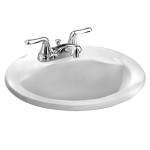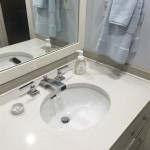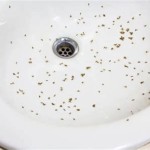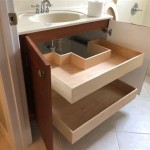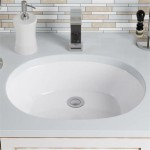How to Change a Bathroom Light Bulb: A Comprehensive Guide
Changing a bathroom light bulb is a common household task, but it's essential to approach it with safety and precision. This guide provides a detailed, step-by-step explanation of how to safely and effectively change a bathroom light bulb, covering different types of bulbs and fixtures, safety precautions, and troubleshooting common issues.
Step 1: Prioritize Safety and Preparation
Before commencing any electrical work, even as simple as changing a light bulb, deactivating the electrical circuit is paramount. Locate the circuit breaker that controls the bathroom lights. This is typically found in the electrical panel, often situated in a utility room, garage, or basement. Consult the panel directory to identify the correct breaker. If the directory is unclear, a process of elimination may be necessary, flipping breakers one at a time until the bathroom lights turn off. Once identified, switch the breaker to the "off" position. This action cuts off the electrical supply to the fixture, minimizing the risk of electric shock during the bulb replacement process.
Even after deactivating the circuit, it’s prudent to visually confirm that the light fixture is indeed off. Attempting to change a bulb in a live fixture is inherently dangerous. After confirming the power is off, allow the bulb to cool down completely. Light bulbs, especially incandescent and halogen types, generate significant heat during operation. Handling a hot bulb can result in burns. Allow sufficient time for the bulb to cool to a safe handling temperature, typically a few minutes.
Gather the necessary tools and equipment. These typically include: a replacement light bulb of the correct type and wattage, a stepladder or sturdy stool if the fixture is out of reach, gloves (either rubber or cotton) for added grip and protection, and safety glasses to protect the eyes in case the bulb shatters during removal. Having these items readily available before starting the process streamlines the task and reduces the likelihood of accidents.
Selecting the correct replacement bulb is crucial. Light bulbs come in various types, including incandescent, halogen, compact fluorescent lamps (CFLs), and light-emitting diodes (LEDs). Each type has different characteristics regarding energy efficiency, lifespan, and light output. Consult the existing bulb or the fixture's labeling to determine the correct type and wattage. Using a bulb with a higher wattage than recommended can overload the fixture and potentially create a fire hazard. Furthermore, consider the desired color temperature of the light. Color temperature is measured in Kelvin (K) and affects the ambiance of the room. Lower Kelvin values (e.g., 2700K) produce a warm, yellowish light, while higher Kelvin values (e.g., 5000K) produce a cooler, bluish light. Choose a color temperature that complements the bathroom's décor and desired lighting effect.
Step 2: Removing the Old Light Bulb
The method for removing the old light bulb depends on the type of fixture. Many bathroom light fixtures have a glass cover or shade that needs to be removed first. This cover is often held in place by screws, clips, or a twist-and-lock mechanism. Carefully examine the fixture to determine how the cover is attached. If screws are present, use a screwdriver of the appropriate size to loosen them. If clips are used, gently pry them open to release the cover. For twist-and-lock mechanisms, rotate the cover counterclockwise until it detaches. Support the cover with one hand while removing it to prevent it from falling and breaking. Once the cover is removed, set it aside carefully in a safe location.
With the cover removed, access to the light bulb is now available. Depending on the type of bulb, the removal process will vary. Incandescent and halogen bulbs are typically screwed into the socket. To remove these bulbs, grasp them firmly and rotate them counterclockwise. If the bulb is stuck, use gloves to improve your grip. Avoid applying excessive force, as this can cause the bulb to shatter. If the bulb breaks, take extra precautions to avoid contact with the broken glass. Use pliers to carefully remove any remaining pieces from the socket. CFLs and some LEDs may have a different type of base, such as a bayonet base. To remove a bayonet base bulb, gently push the bulb in and rotate it counterclockwise. The bulb should then release from the socket.
Disposing of the old light bulb properly is essential. Incandescent and halogen bulbs can be disposed of in the regular trash. However, CFLs contain a small amount of mercury, which is a hazardous material. These bulbs should be recycled at a designated recycling center. Many hardware stores and home improvement stores offer CFL recycling programs. LEDs do not contain mercury and can typically be disposed of in the regular trash, although recycling is always the preferred option. Check local regulations for specific disposal requirements.
Step 3: Installing the New Light Bulb
Before installing the new light bulb, inspect the socket for any signs of damage or corrosion. If the socket appears damaged, it may need to be replaced by a qualified electrician. Inserting a new bulb into a damaged socket can be dangerous. Ensure the socket is clean and free of debris. If necessary, use a dry cloth to wipe the inside of the socket. Do not use water or any other cleaning solution, as this can create an electrical hazard.
Carefully insert the new light bulb into the socket. For screw-in bulbs, align the base of the bulb with the threads of the socket and rotate it clockwise until it is snug. Do not overtighten the bulb, as this can damage the socket. For bayonet base bulbs, align the pins on the base of the bulb with the slots in the socket, push the bulb in, and rotate it clockwise until it locks into place. Ensure the bulb is securely seated in the socket. A loose bulb can flicker or fail to light properly.
Once the new bulb is installed, carefully replace the glass cover or shade. Align the cover with the fixture and reattach it using the screws, clips, or twist-and-lock mechanism. Ensure the cover is securely fastened to prevent it from falling. If screws were used, tighten them just enough to hold the cover in place. Overtightening the screws can crack the cover. If clips were used, ensure they are securely engaged. For twist-and-lock mechanisms, rotate the cover clockwise until it locks into place.
After replacing the cover, restore power to the bathroom lights by switching the circuit breaker back to the "on" position. Turn on the light switch to test the new bulb. If the bulb lights up, the replacement process was successful. If the bulb does not light up, check the following: ensure the bulb is properly seated in the socket, verify that the circuit breaker is fully on, and confirm that the replacement bulb is the correct type and wattage. If the bulb still does not light up after checking these items, there may be a problem with the fixture or the wiring, and it's best to consult a qualified electrician.
Cleaning up the work area is the final step. Dispose of any packaging materials and tools. Store the stepladder or stool in a safe place. Sweep or vacuum any broken glass or debris. Double-check the area to ensure there are no remaining hazards. A clean and organized work area reduces the risk of accidents.

How Do I Replace The Bulb In This Enclosed Bathroom Ceiling Light Hometalk

How To Replace A Bathroom Light Fixture

Easy Ways To Replace An Led Recessed Light Bulb 13 Steps

How To Change Your Bathroom Light Bulb

How To Change A Bathroom Light Bulb You Can Do It Instructional

How To Remove The Light Cover In Room Frequently Asked Questions Leopalace21 Chintai Als Al Apartments And Monthly Mansion For Single Tenants

Replacing A 2d Bathroom Light Bulb

How To Remove Light Bulb Bunnings Work Community

How To Change A Recessed Light Bulb

How To Replace Shower Light Bulb Recessed The Wall
Related Posts
